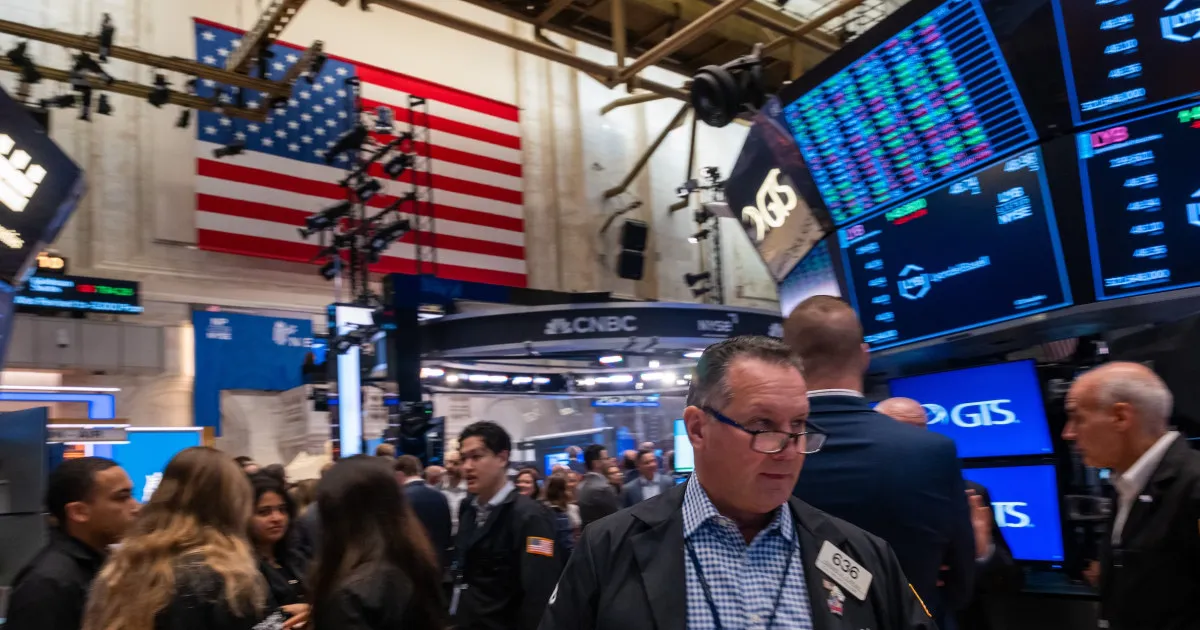
As the U.S. government enters another shutdown, many are left wondering: if this disruption can't halt the rising stock market, what can? Despite the shutdown causing delays in critical economic reports that typically guide trading behaviors, the stock market continues to soar. Recently, the S&P 500 and Dow Jones Industrial Average achieved all-time highs, showcasing a remarkable resilience.
This current market surge isn't solely propelled by Big Tech, which has historically been a significant driver of stock performance. While companies like Nvidia continue to thrive amidst the artificial intelligence frenzy, it appears that nearly every sector on Wall Street is experiencing gains. Notably, the Russell 2000 index, which tracks smaller companies, has also reached record levels after nearly four years of struggling to regain its previous peak. Additionally, gold prices have surged to new heights, and the most popular U.S. bond fund is on track for its best annual performance in at least five years.
Looking back at previous government shutdowns, their impact on the stock market and overall economy has been relatively minimal. Many investors are betting that this trend will continue during the current shutdown. Analysts on Wall Street anticipate further market growth, even after a significant 35% surge since April's lows. However, while optimism reigns, risks remain that could alter this positive trajectory.
One of the primary concerns among investors is the high valuation of stocks. Following a relentless rally since April, stock prices have risen more rapidly than corporate profits. Utilizing a measure popularized by Nobel Prize-winning economist Robert Shiller, the S&P 500 is nearing its most expensive valuation since the dot-com bubble of 2000. Some market critics draw parallels between the current situation and that previous bubble, where the S&P 500 ultimately lost half its value.
Moreover, Ann Miletti, head of equity investments for Allspring Global Investments, has noted the significant rise in prices for speculative stocks, particularly smaller, money-losing companies that have outperformed more profitable firms in recent months. While she maintains a relatively optimistic outlook for stocks heading into 2026, she cautions that such speculative bubbles could lead to negative consequences.
For stock valuations to stabilize, either prices must decline or corporate profits need to increase. This trend heightens the stakes for the upcoming profit reporting season, where companies will disclose their earnings for the summer. Industry giants like PepsiCo and Delta Air Lines are poised to kick off this season on Thursday, followed closely by major banks such as JPMorgan Chase. Analysts predict that S&P 500 companies will report an average earnings growth of 8% year-over-year. Meeting this target and projecting continued growth into the next year will be crucial for sustaining investor confidence.
A significant factor contributing to the stock market's bullish sentiment is the expectation that the Federal Reserve will implement a series of interest rate cuts. Lower interest rates stimulate economic activity by making borrowing more affordable for households and businesses. This environment encourages investors to pursue higher prices for stocks and other investments. Wall Street traders are largely anticipating at least three more rate cuts from the Fed by mid-summer, as indicated by data from CME Group.
Fed officials have suggested a willingness to lower rates due to a slowing job market. However, Chair Jerome Powell has cautioned that plans could shift quickly, especially since inflation remains stubbornly above the Fed's 2% target. If the Fed fails to meet market expectations for rate cuts, sectors reliant on speculative investments may face significant challenges.
The ongoing boom in artificial intelligence stocks presents another layer of complexity to the market's future. Yung-Yu Ma, chief investment strategist at PNC Asset Management Group, asserts that AI-related stocks do not appear overly expensive—provided the industry maintains robust growth and sales. The optimism surrounding AI is also contributing to lower long-term interest rates and alleviating inflation concerns. For AI to positively impact the economy, it must enhance productivity enough to counteract inflationary pressures resulting from rising government debt levels.
In conclusion, while the stock market's current resilience amidst a government shutdown is notable, various factors—including high valuations, corporate profit growth, the Federal Reserve's interest rate decisions, and the sustainability of the AI boom—will ultimately determine whether this bullish trend can continue. Investors are keenly aware that the situation remains fluid, and potential risks could quickly shift the market landscape.